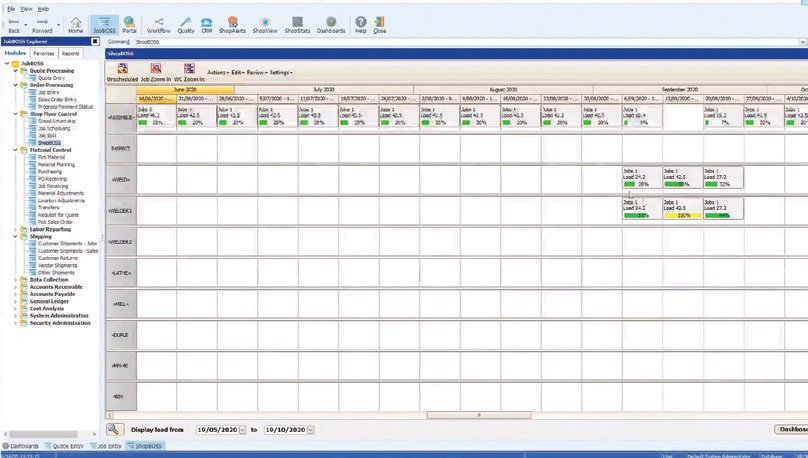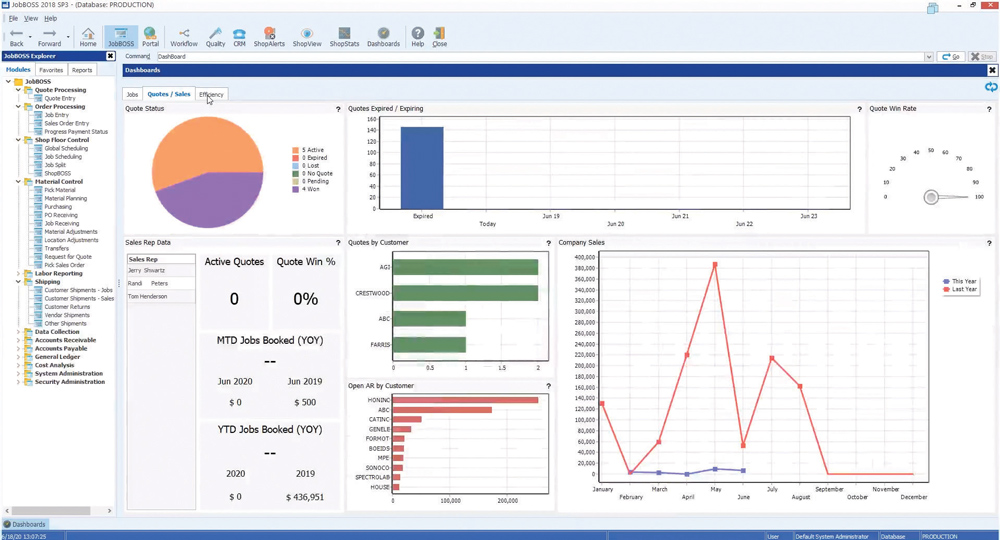complete software suite overhaul can seem daunt-ing and risky during normal circumstances. When the COVID-19 pandemic tied up the econ-omy, Crafts Technology in Elk Grove Village, Illinois, chose to add two soft-ware modules to its existing ERP system to streamline operations and communi-cation between remote and on-premise departments.
“We needed to take incremental steps in order to adjust to an unprecedented work-from-home situation,” says Joe Ab-bate, technical sales manager. “We had to consider that a lot of our workers have gone into work for 40 years and working from home seemed awkward. It wasn’t an easy change for them to make.”
Crafts Technology designs and man-ufactures wear parts, components, assemblies and custom tooling, and per-forms EDM and grinding. When federal regulations required social distancing to avoid COVID-19 infection, the company split up its engineering and office adminis-tration departments, which include about eight to 10 people. “We started having peo-ple come in on alternate weeks and noticed right away that some people wouldn’t make it to virtual meetings—it was a quite a chal-lenge at first,” Abbate says.

These added modules allow the com-ponent and subassembly manufacturer to safeguard administrative tasks by elim-inating data entry mistakes. For example, if delivery quantities and order quantities differ, an alarm alerts the user that the job should be reviewed. Whether an employee is working in the office or off site, there is no disconnect that may lead to errors.

ECI’s Job Location Utility allows users to plan and see each step of a process along the way using detailed master, pro-duction and shipping/parts modes. Users can look up job histories to see where in the process parts are, including which worker moved what and when. Each project is tracked and accounted for in real time.
 We knew we had to do everything we could think of as soon as possible.
We knew we had to do everything we could think of as soon as possible. 
“We’re unable to hold production meetings as we would normally,” Abbate says. “When we’re not doing production meetings virtually, we socially distance (keeping 6 ft. apart) and have given our workers iPads and headphones to follow along during meetings on the floor.
“We can speak to each other and inter-face in this way without always wearing masks,” he continues. “This way, we no longer have to rely on people calling in remotely and either having trouble con-necting or missing the meetings entirely.”
Despite COVID-19-related dis-ruptions, Crafts Technology’s workload has remained steady. “These software upgrades were in the works anyway,” Abbate says. “But the pandemic forced us to make these changes ASAP. We were accustomed to using JobBOSS and using these two additional modules felt relatively seamless. Each ECI utility has been pretty straightforward, and our employees have been able to handle these modules with no problems.”
As efforts to streamline communication continue, Crafts Technology’s team re-mains confident about the future. “With every hurdle COVID-19 has put in front of us, the ability to maintain our busi-ness—only slightly behind our growth goal for this year—means something for us,” Abbate says. “We knew we had to do everything we could think of as soon as possible and installing these modules were part of that.”
When the pandemic first hit the U.S. in March, Crafts Tech-nology immediately reacted. Along with its social distancing protocols, updated software and emphasis on employee com-munication, the company documented its strategy and made it public. “We stayed open and had to figure stuff out on the fly,” Abbate says. “We published what we’d done to all our vendors, partners and customers in a downloadable manual.”
By sharing what the shop has done thus far, Abbate says the intention is to help others learn from what they’ve tried. “We’ve been through all the steps”—to upgrade automation and adjust procedures to accommodate health guidelines. “We have a news and learning section on our website with a COVID-19 protocol manual available to anyone who wants to view it. It’s a way to help others as they work their way through this difficult time.


